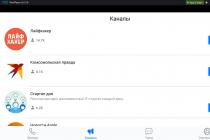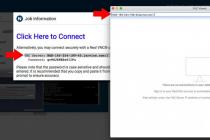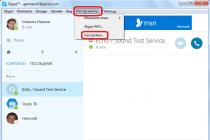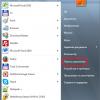How to return to the site a visitor who did not perform the targeted action? Start remarketing on the Google Display Network: engaging banners will remind users of the product, and you can direct your advertising budget to “hot” audiences. In this article, I will walk you through the setup step by step. remarketing in Google Ads.
1. Add remarketing code to your site
To collect lists of users who have visited the site, you can:
- set a Google Ads remarketing tag;
- use modified Google Analytics code.
1.1. How do I add a Google Ads remarketing tag?
1.1.1. Open Google Ads and go to the Shared Library - Audiences tab.
In the "Site visitors" subsection, click on the "Set up remarketing" link.
1.1.2. In the window that opens, click on the "Configure remarketing" button. You will only need a check mark next to the "Use dynamic ads" field when setting up dynamic remarketing, to create a regular remarketing campaign - leave the field blank.

1.1.3. A pop-up window appears asking you to set a Google Ads remarketing tag. You can immediately send the code and instructions to it to the programmers - just enter the recipient's e-mail.

To copy your remarketing code, click the View Google Ads Tag for Websites link.

This code must be inserted on all pages of the site between the tags
.Choosing to set up remarketing with using google Analytics gives you several benefits at once:
- more flexible audience settings are available - you can take into account user behavior on the site and their goals;
- you can quickly create remarketing audiences using scripts and out-of-the-box templates from the Solution Gallery.
1.2.1. Go to Google Analytics and click on the gear to open the Admin panel. In the resource settings, go to the "Tracking code" sub-item - "Data collection". 
1.2.2. In the remarketing settings, turn the slider to the "On" position. and save your changes.
1.2.3. If Google Analytics is installed using Google Tag Manager, it is enough to activate data collection in your account settings. If the analytics code is installed directly on the site, after activating remarketing, the Analytics tag must be replaced.
In the resource settings, go to the "Tracking code" item and copy the script highlighted in the screenshot. 
Paste this code on all pages of the site before the closing tag.
How to return to the site a visitor who did not perform the targeted action? Start remarketing on the Google Display Network: engaging banners will remind users of the product, and you can direct your advertising budget to “hot” audiences. In this article, I will walk you through the setup step by step. remarketing in Google Ads.
1. Add remarketing code to your site
To collect lists of users who have visited the site, you can:
- set a Google Ads remarketing tag;
- use modified Google Analytics code.
1.1. How do I add a Google Ads remarketing tag?
1.1.1. Open Google Ads and go to the Shared Library - Audiences tab.
In the "Site visitors" subsection, click on the "Set up remarketing" link.
1.1.2. In the window that opens, click on the "Configure remarketing" button. You will only need a check mark next to the "Use dynamic ads" field when setting up dynamic remarketing, to create a regular remarketing campaign - leave the field blank.

1.1.3. A pop-up window appears asking you to set a Google Ads remarketing tag. You can immediately send the code and instructions to it to the programmers - just enter the recipient's e-mail.

To copy your remarketing code, click the View Google Ads Tag for Websites link.

This code must be inserted on all pages of the site between the tags
.Choosing to set up remarketing using Google Analytics gives you several advantages at once:
- more flexible audience settings are available - you can take into account user behavior on the site and their goals;
- you can quickly create remarketing audiences using scripts and out-of-the-box templates from the Solution Gallery.
1.2.1. Go to Google Analytics and click on the gear to open the Admin panel. In the resource settings, go to the "Tracking code" sub-item - "Data collection". 
1.2.2. In the remarketing settings, turn the slider to the "On" position. and save your changes.
1.2.3. If Google Analytics is installed using Google Tag Manager, it is enough to activate data collection in your account settings. If the analytics code is installed directly on the site, after activating remarketing, the Analytics tag must be replaced.
In the resource settings, go to the "Tracking code" item and copy the script highlighted in the screenshot. 
Paste this code on all pages of the site before the closing tag.
Users do not make a purchase when they first visit the site. There are many reasons - from the banal "I just see", to problems with the Internet connection, a complicated ordering process, distracting phone call... The likelihood that a person will visit the site again is extremely small.
In order not to miss out on potential customers and, accordingly, profit, you need to set up remarketing in Google AdWords. Thanks to this feature, you will be "catching up" site visitors with advertisements. The more often potential or existing customers see your banners, the higher the likelihood of making a purchase.
Many website owners believe that remarketing and retargeting are two names for the same technology. This is partly true: remarketing is a function of Google Ads, and. The difference between the two is in customization options and ad formats.
Types of remarketing
Google AdWords offers site owners five types of remarketing that are suitable for any business:
- standard remarketing in KMS;
- search remarketing;
- dynamic remarketing;
- targeting similar audiences;
- customer match.
There are other ways to return customers, such as those who viewed video content or downloaded an app. In this material, we will not dwell on them - we will consider the main types.
Standard remarketing
This technology allows displaying advertising materials to site visitors who, for whatever reason, have not been converted into an application or purchase. Internet marketers advise making the most of banners. Users perceive graphic content better, and CPA - in comparison with text ads - is lower. To prevent the audience from quickly developing banner blindness, you will have to make several images for your ads and change them periodically. Setting limits on impressions will prevent a possible surge of negative towards the brand due to the frequent flashing of promotional materials.
It is more expedient to place banners on those CMS sites that give the maximum conversion at the lowest cost per click. It will be possible to determine them within a month from the date of launching remarketing.
Search remarketing
This technology will "catch up" with your potential buyers when they turn to search engine... Search remarketing is divided into two types - Bid Only and Target & Bid. In the first case, the advertiser adjusts the bids for audiences, and in the second, it shows promotional materials in the search only to those people who are included in the remarketing list.
Dynamic remarketing
Ideal for e-commerce resources. If the site contains a large number of goods or services, then they can be advertised to users who have ever visited the site, but did not buy anything. At correct setting A potential buyer will see your ad with your product everywhere, which is likely to encourage them to make a purchase.
This type of remarketing is based on the principle of showing advertising materials to people with similar behavior. Internet marketers believe that this method of customer return should be used in conjunction with other technologies, for example, with search remarketing.
To get the most out of your ad display, you will also have to select a list of sites with high conversions, and more precisely set up keyword targeting.
Customer match
This technology allows you to "warm up" customers who have left you a contact email. Will be a great support for email marketing. Configuring the display of advertisements by address Email, you can "catch up" with a potential buyer if:
- Your sales letter didn't convert the lead into a sale.
- the thread of letters did not work as expected;
- the person has unsubscribed from your mailing list;
- you do not want to annoy the client with letters, giving him time to think (relevant in the field of real estate).
It is necessary to exclude the addresses of active customers from the remarketing audience, so as not to waste the budget and cause negative people in people.
Remarketing can be configured in Google AdWords and Google Analytics. The first option involves working with code, the second is using the capabilities of the Google Analytics service. Let's consider both options in more detail.
To set up remarketing in Google AdWords, you need to log in to the service and find the item "Shared Library" in the left menu. After clicking on this item, "Audiences" will open, in which you need to click on the "Set up remarketing" link.
After clicking on the blue "Configure remarketing" button, you will see instructions on how to configure it. To start collecting an audience for displaying advertisements, you need to place the code generated by the system on the site pages.

If you don't want to mess with the code, set up remarketing in Google service Analytics. This option is much easier and faster.
Before setting it is necessary.When the accounts are linked, you can proceed to the setup.
Step 1:
Setting up the audience
V admin panel find the "Resource" block, select "Audience Settings" and click on "Audiences".

For those who have not previously set up remarketing, the service will automatically offer to create the first audience.

After you specify the audience source, you need to enable remarketing. When collecting the first audience, the settings are set by default - the data of all site visitors for the month will be taken into account. You can later adjust the settings that were initially set.

Now you need to define the accounts to which the audience will be published. Please note that you cannot change accounts after you set up remarketing.

All that remains is to click on the "Enable" button and create a targeted advertising campaign.

It takes a few minutes to set up Google remarketing. This can be done in two ways - we will analyze the simplest of them. Sit back, I'll quickly tell you how in 7 minutes you will create your first audience in Google Adwords and set up displaying ads for it.
Remarketing or retargeting?
Yes, these are synonyms. It's just that retargeting is used in the terminology of Yandex Metrica, and remarketing is used in Google. Therefore, these concepts are one and the same. But since we refer this article to the heading Google Adwords, then we will speak in His language 🙂
2 ways to set up remarketing on Google
Hereinafter, I will assume that you, dear reader, already have an account in Google Adwords. Because otherwise you would not be wondering how to set up remarketing - after all, this is already the next step in working with contextual advertising.
So, there are two options for setting up remarketing.
Using Google Adwords Tag
To do this, go to the "Shared Library" (menu on the left), the "Audiences" tab and click "Set up remarketing".
Then click on the blue button "Set up remarketing" and you will see the setup instructions. The system will offer to copy the remarketing code to all pages of the site so that it becomes possible to collect an audience.

To be honest, I've never tried setting up remarketing using the Adwords tag. Why, if it can be done using Google Analytics without installing additional code on the site 🙂
Remarketing with Google Analytics
The easiest option, because it involves setting up remarketing in the process of setting up the Analytics counter. Of course, in this option, everything starts with installing a counter on the site.
Then, in the counter settings at the Resource level, we link the Analytics and Adwords accounts. If the Analytics account was created in the same Google account on which you work with Adwords, then the setting is done in just a couple of clicks. If Analytics is on a different account, then you will have to give access to the counter. I am sure that you have everything in one account, so I will not dwell on this point.

Go to "Resource Settings" - "Link to AdWords". Further - it is elementary, the beginner will figure it out. If you still have problems at this stage - take a look. In this article, I also considered this moment in detail.
After the connection between the Analytics and Adwords accounts is established, go to the section "Audience Settings" - "Audiences" in the same place at the Resource level.

We press the big red button "+ Audience". In the instructions that appear, select the view (you will most likely have the only one), select the linked adwords account and click the "Next" button.

Here the system offers to select an audience. I suggest not to bother at the beginning and create a basic audience of "All users" with a maximum duration of 540 days (as opposed to 90 in Metric). Click on the appropriate field in the list, name the audience in a convenient way for yourself and squeeze the "Save" button. Specify the term of participation in the next step.

Fabulous! The most difficult thing is behind - the first audience is created and ready to roll out. Here the system will prompt you to create a Remarketing campaign right away.

Quick instructions for the first campaign
To do this, click on the "Create Campaign" button and you will be redirected to the Adwords page at the stage of creating a new campaign. This is convenient because the system automatically specifies the campaign type "Display only", and at the stage of creating the ad group, by default, it targets the remarketing list that has just been created.
In fact, you just have to set the settings for the advertising campaign and make ads. And, well, uncheck the targeting optimization box. At the initial stage, I do not recommend, because in this case the system will actively expand its reach, showing ads not only to users from the remarketing list. And we want to start neat and without draining, right?

- create an advertising campaign of the "Display only" type;
- Create an ad group and name it the same as your remarketing audience (for your convenience);
- Create a text and image ad in the ad group.
- set the targeting for the ad group, like: "Interests and remarketing" - and here select the audience created in analytics.
- Run an ad campaign on a test budget of $ 5 with a maximum bid at the ad group level of $ 0.03.

And of course, don't forget about conversion tracking and study first- and last-click attribution models to pump your brains in this regard. And I will help you.
In this article, we'll go over three steps in detail:
- Setting up tracking of site visitors.
- Creating audiences to which we will direct our advertising
- How to set up an advertising campaign correctly.
Add remarketing code to your site
To collect lists of users who have visited your site, you can set the Google AdWords remarketing tag and use the modified Google Analytics code.It is best to use two options at once. This will allow further creation of user audiences in both systems.
1.1 How do I add a remarketing tag to Google AdWords?
First you need to go to Google Adwords and click on the tab “Shared Library” - “Audiences”.
In the menu that opens, you need to click on the "Configure remarketing" button. If you are only going to create a regular remarketing campaign, then uncheck the Use dynamic ads box.

In the window that appears, you are offered to add send a code and instructions by mail. Usually it is worth indicating the mail of your programmer or the person who works on the site.

To copy the remarketing code, click on the link “View AdWords tag for websites”

Now you need to insert this code on all pages of the site between the tags
.1.2. How to set up remarketing in Google Analytics?
If you are setting up remarketing with Google Analytics this gives you some advantages:
- You can be more flexible in working with audiences. In the settings, you will have access to the behavior of people on the site and their achieved goals
- You can create remarketing audiences using ready-made templates from the "Solution Gallery"

Now we need to go to the remarketing settings and enable the slider. Then we save the changes.
If you installed Google Analytics using Google Tag Manager, then you can activate this collection in your account settings.

We need to go to the "Tracking Code" item and copy the script.
Now it remains to insert the code on all pages of the site before the tag
We create remarketing audiences in Google Adwords
A remarketing list is a list of criteria for selecting potential users to whom an ad will be shown. Let's say you might be stalking people who came to your site but didn't make a purchase.On the “Audiences” page, click on “+ Remarketing List” and select “Site Visitors”.

In the window that opens, you need to specify the condition by which our ad will be displayed. We can customize the lists depending on the pages visited. And separate audiences

In the "+ Rule" section, we can collect the audience for several audiences. For example, collect people who watched the action and then followed the links to another section of the site.

To configure several sets of conditions, you need to click on the link "Show advanced settings"


You can create a period during which the user will be in this list. It is recommended to set 30 days, however, if you wish, you can set more than 540 days.

Create a remarketing list in Google Analytics
You can use the following features to collect users into an audience:- Demographic data
- Website behavior
- Dates of the first session
- Traffic source
- Conversions
- Device Information
Build Remarketing Audiences with Solution Gallery
Audience creation in Google Analytics can take place in automatic mode... To do this, you need to use the "Gallery of solutions" and clips.To import ready-made templates you need:
 Now we need to select presentation templates in which we will create remarketing lists.
Now we need to select presentation templates in which we will create remarketing lists. 
You don't have to create all the audience lists that you offer. You can simply mark the desired lists.

Now our task is to import the lists Google analytics in AdWords
The first thing to do is to establish a link between the analytics system and advertising accounts in AdWords.
To do this, go to the "Administrator" tab and select "Link to AdWords" in the resource settings
In the communication settings, select the account we need with checkmarks and select "Continue"

Enter a name for linking accounts and click "Select All" and link the accounts.

Now, after 24 hours, your accounts will be linked.
Setting up a remarketing campaign in Google AdWords
We only need to create a Display Network. To do this, click on “+ Campaign” and select the appropriate item.
Campaign-level settings are the same as display campaign settings. You need to specify your budget, bid strategy, and geo targeting.
Now we need to create an ad group and add remarketing list targeting
To do this, select "Content and media network - and remarketing" and then click on the button "+ Targeting"

We put a check mark next to the item "Interests and remarketing", and then - "Remarketing lists".

Now you need to click on the button with two arrows next to the desired list.


In the window that opens, select “Remarketing lists” and add the desired list. Then we save the settings

This completes the setup of remarketing in Google AdWords.














